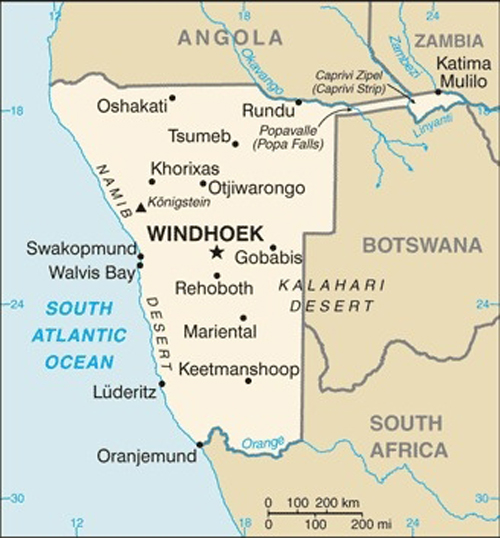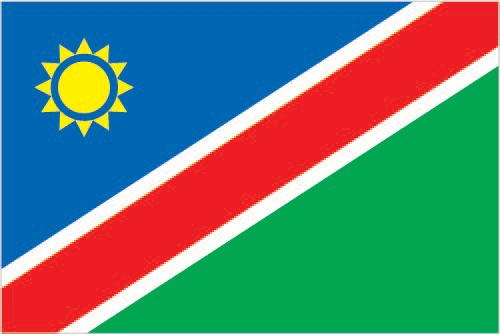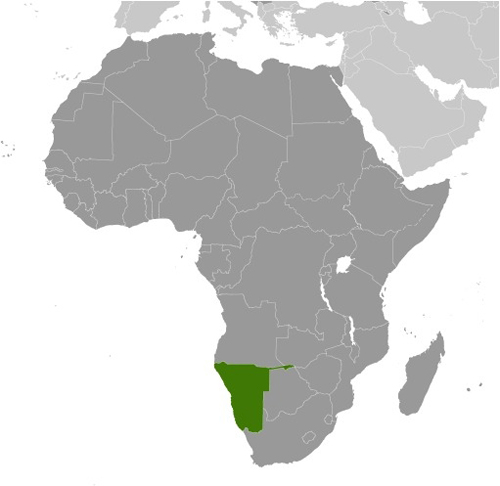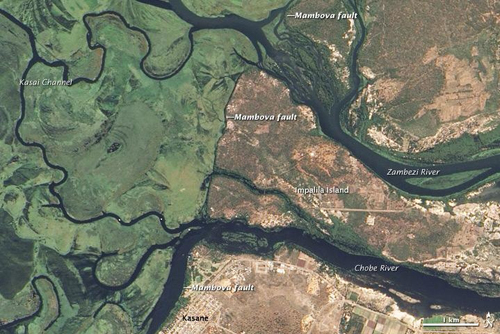
South Africa occupied the colony, then known as German South West Africa, in 1915 during World War I and administered it as a mandate until after World War II. In 1966, the Marxist South-West Africa People's Organization (SWAPO) guerrilla group launched a war of
independence for the area that became Namibia. Namibia gained independence in 1990 and has been governed by SWAPO since, though the party has dropped much of its Marxist ideology.
(facts courtesy of CIA World Fact Book)
The Zambezi River is one of the great rivers of Africa. Originating in swampy wetlands in Angola in southwestern Africa, the river flows 2,736 km (1,700 mi) across the continent to the Indian Ocean. This highly detailed true-color satellite image shows the stark eastern edge of the floodplain. To the left of the edge, deep blue channels wind among green, shallowly flooded plains. To the right of the edge, the land is dry. The city of Kasane is situated along the edge of the flood plain near the bottom center of this image. The eastern edge of the flood plain is defined by the Mambova Fault, which elevated the land on its eastern side, providing a natural boundary for the flood plain. The Zambezi and Chobe Rivers cut channels across the fault. The triangle between the two rivers and the fault creates Impalila Island. A channel of water, called the Kasai, connects the two rivers in the flood plain. Floods on the Zambezi occur when heavy rains fall on the wetlands in Angola and Zambia. The water flows downstream and gets backed up at the Mambova fault. The river expands over the flat floodplain behind the fault until the waters meet the channel cut by the Chobe River in the south. During the annual flood, the build up of water from the Zambezi River overcomes the Chobe, and water begins to flow south into Lake Liambezi. Image courtesy of NASA.
Submit your Cleveland Namibian cultural items.
| 





